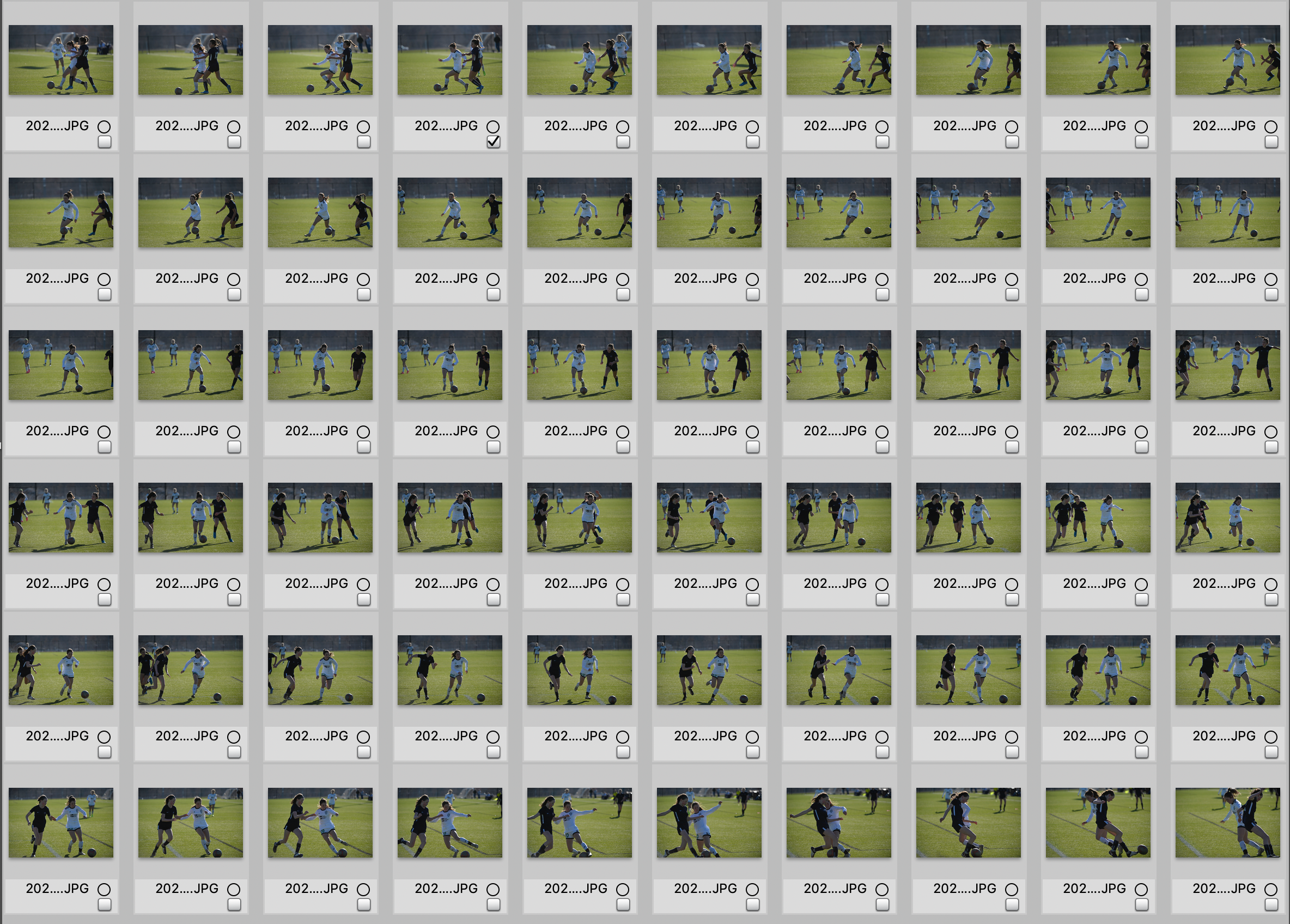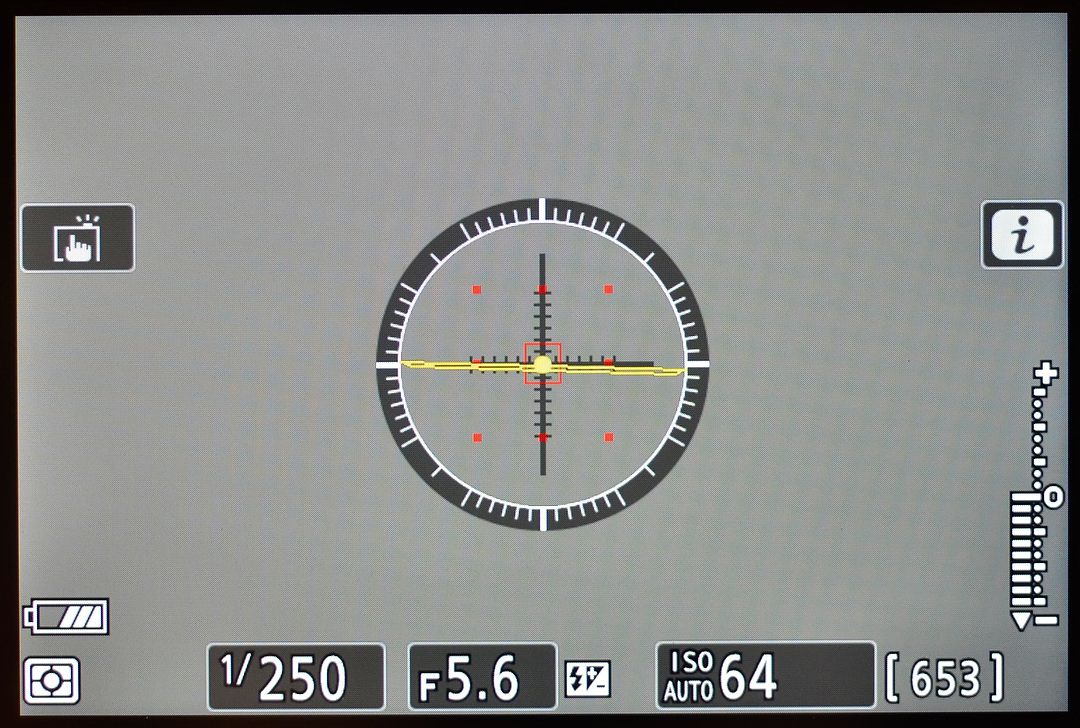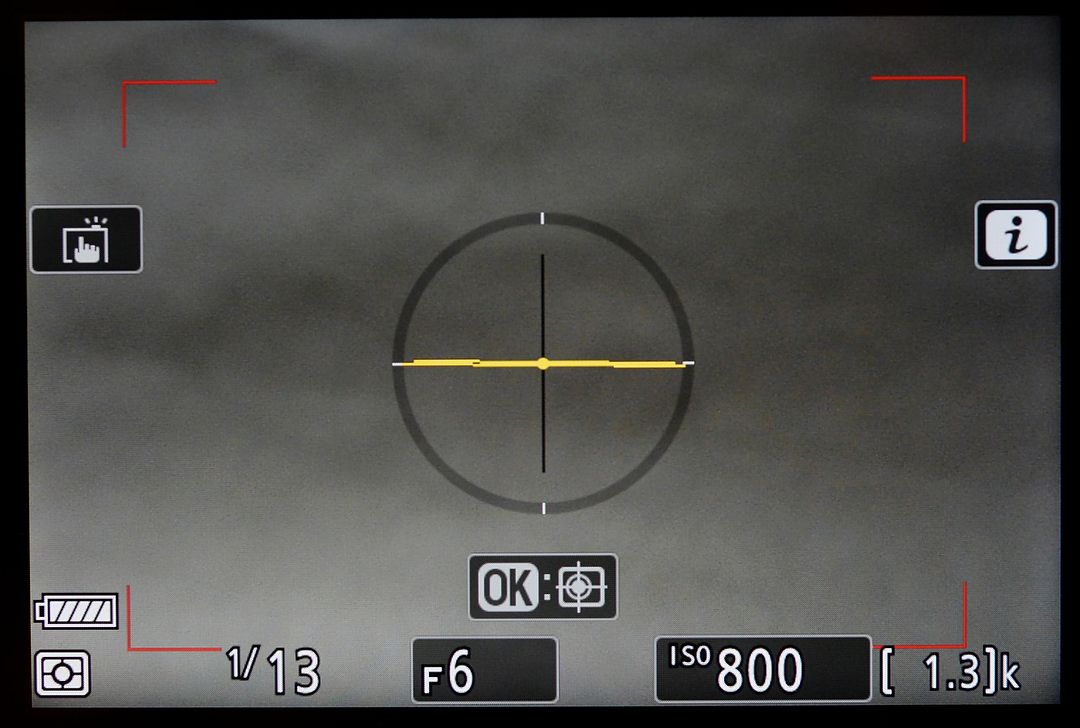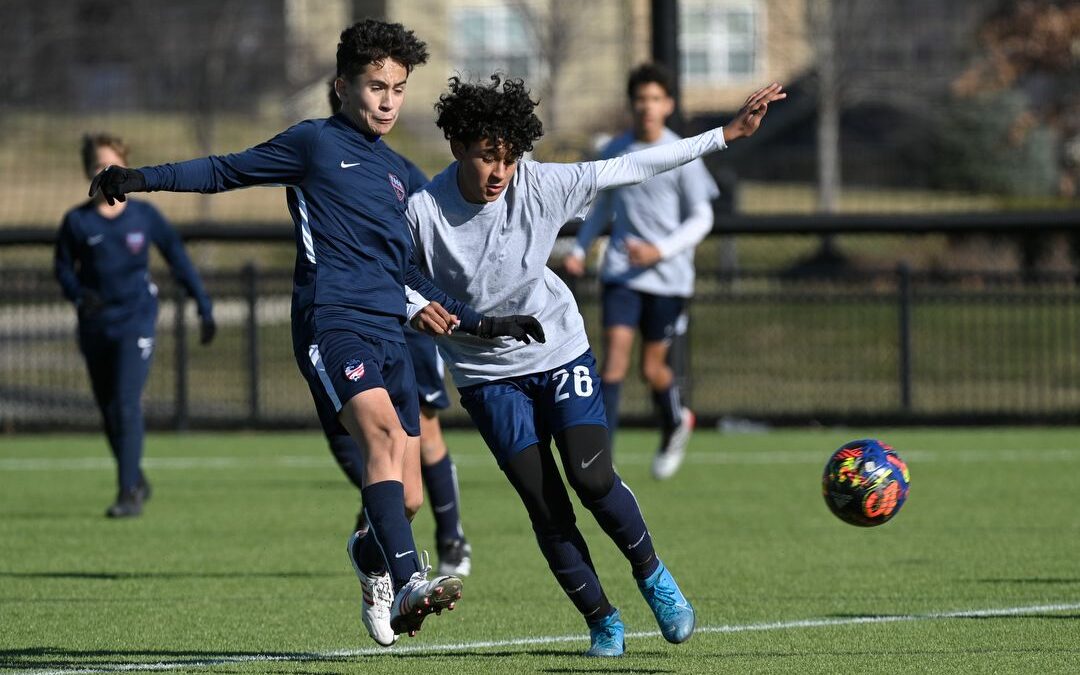In a previous post, I wrote about buying the new Nikon Z 6 II and wanting to put its upgraded autofocus system to the test. I wasn’t able to do that then, but now I have. And I like what I’m seeing.
If you want to challenge an autofocus system, look for fast-moving action that comes towards you, fairly close. That forces autofocus to move lens elements the most, quickly, and also tests how well the system anticipates. Yes, it needs to “anticipate” where the action will be. When you press the shutter button to take a photo, the subject will already have moved closer to you. That means the camera has to predict where the subject will be when the shutter actually opens. Not surprisingly, that’s referred to as “predictive” autofocus. You also want the system to be able to stick with a subject that moves erratically, so that if your framing briefly shifts, the autofocus doesn’t move to another subject. For testing autofocus, people running towards you, moving left and right, checks most of those boxes.
There’s a large soccer complex down the road from where we live, and the first weekend of December it was host to a regional tournament. So I grabbed my new Z 6 II and headed there. Over the course of two hours, I shot close to 2000 frames (on just one battery, and not even the new model that the camera ships with). Here are the settings I used most of the time:
- Aperture Priority, wide open at f/4 (to maximize shallow depth of field and avoid depth of field hiding where the focus actually was)
- Auto ISO, 200 minimum, 4000 maximum, to maintain a minimum of 1/1600 second.
- JPEG Fine (best quality). Normally I’d shoot RAW, but Adobe had yet to push an update to allow their software to read the NEF files from this new camera (now they have).
- Continuous High frame rate. With JPEG, and my autofocus settings, that meant I was shooting at 12 frames/second. (Note: the camera is capable of 14 fps, but only in Single Point AF, which I wasn’t using).
- Wide-area AF (Large) autofocus area mode. With my original Z 6, I normally shot action like this in Wide-area (Small), but an old friend who’s been shooting pro football with the Z 6 II has had good success with Large, so I used it.
- Nikkor 200-400mm f/4 lens with Focus Limiter switch set to “On,” VR off, and on a monopod.

Here’s a sixty-frame sequence from the Z 6 II at 12 frames-per-second. You can see those frames as a video, below.
Bottom line, the system performed very well. In the sixty-frame sequence shown below (as a screen-grabbed video), it never lost focus. That was the longest burst I had, and saw the same performance in shorter bursts. You can also watch the EXIF info in the upper right (thanks to Photo Mechanic) and see that the time covered was five seconds and Auto ISO made sure the shutter speed never dropped below 1/1600. Note also how I zoomed the lens out as the action approached me, challenging the autofocus further, until the player got too close and lost the ball. My “hit” rate of in-focus pictures that afternoon was around 90% or higher, and most importantly, the focus almost always stayed with the player I was following after acquiring focus.
The Z 6 II also has a reduced“blackout” time when shooting bursts. Most mirrorless cameras do this, which results in a “stutter” effect that can make following fast action more difficult than with mirrored cameras (which also have a mirror blackout, but with a different look). Nikon has shortened that blackout time, and I did find following action easier. Note in the sixty-frame burst I’m able to keep the primary player near the center of the frame as she moves left and right. I still find it easier to do that with a mirrored camera, but that may be just because it’s what I’m used to. I expect the more I use the Z for action, the more I’ll adapt to the new look. Time will tell
In addition to focus, the greatly expanded buffer had no trouble maintaining that 12 frames per second rate, especially with the SanDisk Extreme Pro CFexpress card I was using. While Nikon added a second card slot (SD) to the new camera, I doubt I’ll use that much since the other slot allows for much faster cards, and I’ve never had a card failure. Thanks to the additional Expeed 6 processor, I can now shoot about three times longer on high-speed burst than before without worrying about filling the buffer.
What else? The autofocus seemed a bit quicker to initially acquire focus. Nikon has also added people and animals (dogs and cats) options in the Wide-area (L) AF-area mode, which I’ve used a bit so far and seem to work well (as well as making it easier to choose people or animals for the “Auto” mode). Another welcome feature is that the camera is faster to wake from sleep (power-saving mode). The original Z 6 would wake, but with the viewfinder in a dimmed state and then brighten. The new model now wakes up bright-eyed. The camera can also focus in less light than before, supposedly down into moonlight. As someone who enjoys doing night photography, I look forward to taking advantage of that
For those of us who use Live View to frame occasionally (I often put my camera down at ground level, or hold it just above water), Nikon added the ability to turn the information displays off while using Live View. Previously, having ISO, shutter speed, aperture and more overlaying the image area could make careful framing difficult. By default, you can activate that with the video record button. Unfortunately, I like to program that button to allow me to change autofocus area modes without having to take the camera down from my eye (which is great!). So when I do want that feature, I’ll go into Custom Controls and change it.
On the original Z 6 the virtual horizon display, which you could turn on in the viewfinder, was fairly large and distracting. When doing landscape photography, I like being able to see that all the time to help me keep my framing level. On the original Z 6, that was fairly large and distracting. The II has dimmed it and made it less obtrusive, which is great. I’m still hoping that at some point Nikon will let us have both the virtual horizon AND the live histogram visible at the same time. That would be a nice enhancement.

Here’s the virtual horizon display you can turn on in the original Z cameras.

And this is the less obtrusive version found in the Z 6 II and Z 7 II.
The one thing I didn’t do that day was shoot the original Z 6 alongside the new one. So I returned the following weekend. What surprised me, and shouldn’t have, was how well that camera also performed. I’ve always said that autofocus on the Z 6 (as well as the original Z 7 and Z 50) for fast action was good but not great, as compared to my D5, D850 and D500 (which shared Nikon’s top-of-the-line autofocus system). Despite that, I’ve shot professional football, baseball, NCAA basketball and ski racing with those Z cameras and made good pictures. Returning to the soccer field with the Z 6 reminded me how good its autofocus actually was, and still is. The camera was just a bit slower to acquire at times, and occasionally lost focus while tracking. But all in all, it did a very good job too. And the Z 6 II improves on that.

Here’s a 44-frame sequence from the original Z 6 of a player dribbling towards me, similar to the series from the Z 6 II earlier. As I was reminded, this camera’s AF system is no slouch.
While I’ve primarily shot with Nikon’s Z cameras since their introduction, I’ve still gone back to my high-end mirrored Nikons for fast action when I had to be sure my autofocus was “there” for almost every frame (remember, no system’s perfect). Now I’ll start shifting more of that work to the Z 6 II (and soon, hopefully, the Z 7 II as well). I believe that once I commit more fully to the Z system for action, I’ll adjust to things like the blackout and feel as confident following action as I have been with my mirrored cameras. And, as these are nice upgrades to the original 6 and 7, I look forward to what I’m sure Nikon is planning as the next step – a whole new generation of mirrorless cameras, with even more advanced features. That gives me one more reason to look forward to 2021!
(If you like this story, please share it with your friends and let them know about the links on photography that I post on my business Facebook page. I’m also on Instagram and Twitter, @reedhoffmann. And if you’re curious about the workshops I teach, you can find them here. And, you can subscribe to this blog on my home page.)


Thought I’d chip in as I’m still a Z6ii user, but its a backup/second cam to my Z9.
I used both at a low-light event last night, and in comparison to the Z9, the Z6ii autofocus on static subjects posed for groups/portraits is woeful. Ability to lock on is poor, and after some hunting it gets it ok. The Z9 is amazing. Be aware if you want a Z6ii for any indoor or evening work; it is a difficult camera to use at wedding receptions.
Hi,
Hopefully this comment still reaches you as it’s been a while since this review was written. I’m looking to move from an entry level DSLR (d3500) to either a D5, D4s or a Z6ii. I will primarily be shooting sports both indoor and outdoor as well as some landscape, macro and wildlife. I’m leaning towards the Z6ii but I have friends who are trying to convince me to choose the D5 or D4s. I’d appreciate any thoughts you have on which you would choose and why.
Thanks.
Hi Peter. I’ve switched completely to Z, but only after I got my first Z 9. The Z 6 II is a really nice camera, but the D4S/D5 autofocus is a bit better. So if the choice is between those two, and sports is the priority, then I’d say get a good used D4S/D5. However, if the Z 9 falls within your budget, it’s even better. Plus, its higher resolution will benefit you in several ways, for both cropping and large-print landscape photos. But if not the Z 9, then go for the 4S/5, you can find some really good deals now that most folks are moving to mirrorless.
Great review. I’m a professional sports shooter as well, and currently use the D500. I have been looking at the Z line for full frame and some of the video features. Would you recommend switching to the Z line from the D500 or would you say to stick with the D500?
Thanks
Hi Abram. That’s one of those “it depends” questions. While the Z 6/7 II AF is pretty darn good (improved from the original), right now the D500 autofocus is faster and more accurate. However, the Z 6 has much better high ISO performance with its larger pixels and newer processing. So it would depend on what you’re shooting. Simple answer would be to stick with the D500 and wait for the next generation Z camera, which is expected to be more sports oriented.
I had the exact same question as above. Thank you for your answer.
2 questions:
Did the firmware update improve focusing for sports?
Does the camera “wake-up” quickly? (My Z50 is slow and I’ve missed shots as a result.)
Thank you for you reply!
Rod – See my answer to your more recent question, I think that should answer the questions.
I had the exact same questions so thank you for your answer. I do have 2 additional questions;
1) Has the camera focusing improved since a firmware update? (April, 2021)
2) Does the camera lag at all when readying a shot? I’ve missed so many shots with my Z50 as it takes a split second to turn on. (I’m used to the D500!)
Thank you for your reply,
Rod
Hi Rodney. That firmware update improved face and eye detection, but I don’t know that I’ve seen that make a difference in AF performance in sports photography. For several portrait and corporate shoots, though, I’ve had a near 1005 “hit” rate with focus using that features, even at wide apertures. The Z 6 II is a bit faster turning on than the Z 50, but still not as fast as the DSLRs like the D500. I’m expecting all of that to be improved with the release of the Z 9, and the cameras that follow it from Nikon.
Thanks for the reply, other then clicking the kid, would you recommend the z6ii over d780 Can you do a side by side comparison of the two cameras, with some sample photos. Sorry if I m asking too much
Regards
Taking away the eye detect autofocus, it really comes down to whether you prefer a traditional mirrored body (DSLR) or the new mirrorless (EVF). Both are very good cameras, excellent high ISO, loads of features. The D780 uses the traditional F mount, so a huge selection of lenses to choose from, including wide range of good used ones. The Z has the new mount, so more limited lenses, and pretty much have to buy new. I’ve written a number of blog posts about the Z cameras, and the one about covering NFL, which was partly about the D780. Sorry, but I’m not a review site, so not planning to take the time to do a side-by-side comparison. You’d be happy with either camera, I think.
Thanks
Hi Reed
I would like to upgrade from my Sony a6300 to a Nikon FF
I m confused between the d780 and z6ii, so which would you recommend for family photos, mainly of my 2 year old daughter, which is as good as shooting a player running towards you 🙂
Regards
Hi Ajaykumar. That’s tough, because both are very good cameras! However, since the Z 6 II has very good face and eye detection autofocus, I’d probably lean towards it. The D780 also has very good tracking autofocus (I’ve been using it to shoot NFL this season), it doesn’t have the eye-detect feature that the Z 6 II does. Good luck with that speedy kid!
Reed –
Good stuff.
I shoot the Z7 and am considering buying the Z6ii, thinking it might be better for wildlife and low light situations. What factors into your decision whether to use the Z6 or Z7?
Hi Jim. For me, deciding which camera to use primarily comes down to ISO. At high ISO’s (certainly 2000 and above), the larger pixels in the II will show less noise. Secondary considerations would be burst rate (up to 14 fps w/ the II) and smaller files (less storage space, faster to process with editing software. However, in good light, at reasonable ISO’s the Z 7 II’s ability to use its DX crop factor for a 1.5X boost in angle of view (and now a file that’s similar in size and MP to the Z 6 II) gives it a nice added feature.
Why do you use aperture priority and restrict ss in menu instead of using manual?
That lets the metering system help adjust my exposure based on changing light conditions. I’ve often used Manual when in fixed light (indoors or at night sporting events), but the rest of the time I prefer Aperture Priority. That may change as I move more to mirrorless cameras, since the electronic viewfinder shows me what’s happening with exposure, making it easier to shift that exposure on the fly.
Wonderful review Reed.
Thanks Reed! A very informative & helpful story!